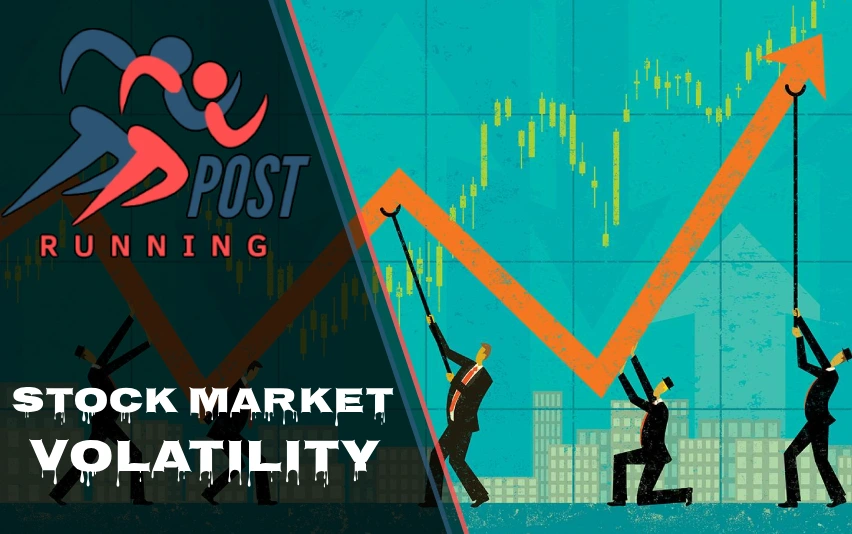Understanding stock market volatility is crucial for anyone involved in the financial world. Whether you’re a seasoned investor or just starting out, grasping the concept of market volatility can make a significant difference in your investment decisions. This article will dive deep into what stock market volatility is, its causes, types, and implications, as well as strategies to navigate volatile markets.
Introduction
Stock market volatility refers to the rapid and significant price fluctuations in the stock market. It’s a measure of how much the market’s overall value changes over time. For investors and policymakers alike, understanding volatility is essential because it affects investment strategies, risk management, and economic stability.
Volatility can be both a friend and a foe. On one hand, it creates opportunities for profit, especially for short-term traders. On the other hand, it introduces risk and uncertainty, which can be challenging for long-term investors and the overall economy. That’s why having a solid grasp of stock market volatility is crucial for making informed financial decisions.
What is Stock Market Volatility?
At its core, stock market volatility is all about the ups and downs of stock prices. It’s like a roller coaster ride for your investments. When we talk about volatility, we’re referring to how quickly and how much stock prices change over time.
Imagine you’re watching a heart rate monitor. If the line is relatively steady with small bumps, that’s low volatility. But if the line is jumping up and down dramatically, that’s high volatility. The same concept applies to stock prices.
Volatility is typically measured using statistical tools like standard deviation and variance. These fancy-sounding terms simply help us quantify how much stock prices are deviating from their average over a specific period.
It’s important to note that volatility has a dual nature. While it represents risk, it also presents opportunities. High volatility can lead to significant losses, but it can also create chances for substantial gains. This is why understanding volatility is so crucial for investors – it helps them balance risk and potential reward.
Causes of Stock Market Volatility
Several factors can cause stock market volatility. Let’s break them down:
- Economic Factors: The overall health of the economy plays a big role in stock market volatility. Things like GDP growth, inflation rates, unemployment figures, and interest rates can all impact stock prices. For example, if the Federal Reserve announces an unexpected interest rate hike, it can send shockwaves through the market, causing prices to fluctuate wildly.
- Company-Specific News: Individual companies can also trigger market volatility. Earnings reports that exceed or fall short of expectations, major mergers or acquisitions, new product launches, or changes in top management can all cause a company’s stock price to swing dramatically. If it’s a large, influential company, these swings can affect the broader market.
- Geopolitical Events: The stock market doesn’t exist in a vacuum – it’s affected by what’s happening in the world. Political instability, trade disputes between countries, or global conflicts can all lead to increased market volatility. For instance, the outbreak of a war or a major terrorist attack can cause investors to panic, leading to rapid sell-offs and price fluctuations.
- Investor Behavior: Last but not least, the psychology of investors plays a significant role in market volatility. Fear, greed, herd mentality, and overreaction to news can all contribute to price swings. When investors get spooked and start selling en masse, it can create a snowball effect, leading to increased volatility.
Types of Volatility
When discussing stock market volatility, it’s important to distinguish between two main types:
- Historical Volatility: This type of volatility is based on past price movements. It’s calculated using the standard deviation of a stock’s price changes over a specific period. Historical volatility gives us insight into how volatile a stock has been in the past, which can help predict future behavior.
- Implied Volatility: This forward-looking measure is derived from options pricing. It represents the market’s expectation of future volatility. Implied volatility is often used by options traders to gauge market sentiment and predict potential price movements.
To put these concepts into perspective, let’s look at some examples of high-volatility periods in history:
- The Great Depression (1929-1939): This period saw extreme price fluctuations as the stock market crashed and the global economy entered a severe downturn.
- The Global Financial Crisis (2008): The collapse of major financial institutions led to high market uncertainty and dramatic price swings.
- The COVID-19 Pandemic (2020): The sudden onset of the global pandemic caused rapid market swings and record-breaking volatility levels.
Measuring Stock Market Volatility
Now that we understand what volatility is and what causes it, let’s look at how it’s measured. There are several tools and indices used to quantify volatility:
- Standard Deviation and Variance: These statistical measures help calculate how much a stock’s price deviates from its average over a specific period. A higher standard deviation indicates greater volatility.
- The VIX (Volatility Index): Often called the “fear index,” the VIX is a popular measure of the stock market’s expectation of volatility. It’s based on S&P 500 index options and is calculated by the Chicago Board Options Exchange (CBOE). A high VIX value indicates greater expected volatility, while a low value suggests calmer markets.
These tools help investors and analysts gauge the level of risk and uncertainty in the market. They’re particularly useful for comparing volatility across different time periods or between different stocks or markets.
Implications of Stock Market Volatility
Understanding stock market volatility is crucial because it has significant implications for investors and the broader economy. Let’s explore some of these implications:
- Risks for Investors: High volatility can be nerve-wracking for investors, especially those with a low risk tolerance. Rapid price swings can lead to substantial losses in a short period. This can be particularly challenging for retirees or others who rely on their investments for income.
- Opportunities for Traders: On the flip side, volatility creates opportunities for day traders and short-term investors. These market participants often thrive on price fluctuations, using various strategies to profit from both upward and downward movements.
- Impact on Long-term Investments: For long-term investors, volatility can be both a challenge and an opportunity. While it can lead to short-term paper losses, it also provides chances to buy quality stocks at discounted prices during market dips.
- Economic Effects: High market volatility can have broader economic implications. It can affect consumer confidence, business investment decisions, and even monetary policy. Prolonged periods of high volatility can potentially lead to economic slowdowns.
- Importance of Diversification: Volatility underscores the importance of portfolio diversification. By spreading investments across different asset classes, sectors, and geographical regions, investors can potentially reduce the impact of volatility on their overall portfolio.
Timeline of Major Volatile Events in Stock Market History
To better understand stock market volatility, it’s helpful to look at some major volatile events in history:
| Year/Period | Event Description | Impact on Volatility |
|---|---|---|
| 1929–1939 | Great Depression | Extreme price fluctuations, market crash |
| 2008 | Global Financial Crisis | High market uncertainty, sharp declines |
| 2020 | COVID-19 Pandemic | Rapid market swings, record-breaking volatility levels |
These events serve as reminders of how external factors can dramatically impact the stock market and underscore the importance of being prepared for volatility.
Common Strategies to Navigate Volatile Markets
While volatility is an inherent part of the stock market, there are strategies investors can use to navigate turbulent times:
- Diversification: This is perhaps the most crucial strategy. By spreading investments across different asset classes, sectors, and geographical regions, you can potentially reduce the impact of volatility on your overall portfolio.
- Long-term Focus: Instead of getting caught up in short-term market fluctuations, maintaining a long-term investment perspective can help you ride out volatile periods. Historically, the stock market has trended upward over long periods despite short-term volatility.
- Dollar-Cost Averaging: This strategy involves investing a fixed amount regularly, regardless of market conditions. It can help smooth out the effects of volatility over time.
- Use of Stop-Loss Orders: These orders automatically sell a stock when it reaches a certain price, helping to limit potential losses during volatile periods.
- Stay Informed: Keeping an eye on economic indicators and geopolitical developments can help you anticipate potential sources of volatility and adjust your strategy accordingly.
- Maintain an Emergency Fund: Having a cash reserve can provide peace of mind during volatile periods and prevent you from being forced to sell investments at inopportune times.
- Consider Professional Advice: If navigating volatile markets feels overwhelming, consider seeking advice from a financial professional who can help tailor strategies to your specific situation and goals.
Conclusion
Understanding stock market volatility is crucial for anyone involved in investing or interested in financial markets. While volatility can be intimidating, it’s an inherent part of the stock market that creates both risks and opportunities.
By grasping the causes and implications of volatility, investors can make more informed decisions and develop strategies to navigate turbulent market conditions. Remember, volatility isn’t necessarily good or bad – it’s how you respond to it that matters.
As you continue your investment journey, keep in mind the strategies we’ve discussed for managing volatility. Stay diversified, maintain a long-term perspective, and don’t let short-term fluctuations derail your overall financial plan. With the right approach, you can turn market volatility from a source of stress into a potential opportunity for growth.
Discover more fascinating insights—explore Running Posts today.















